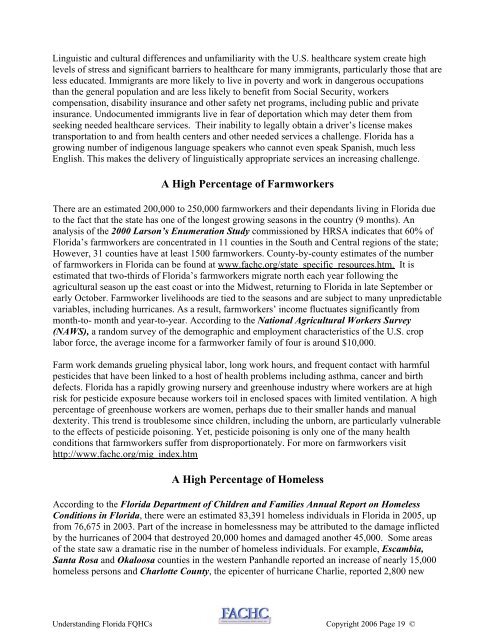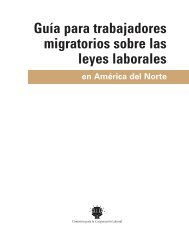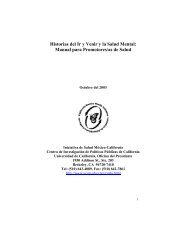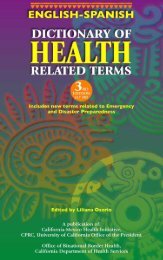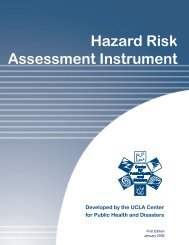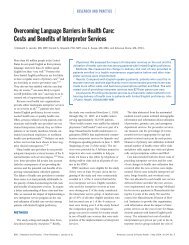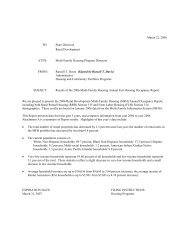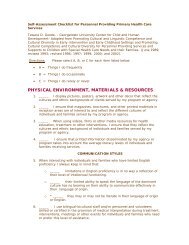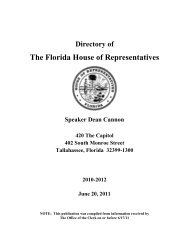Guide to Understanding Florida's FQHCs and 330 Expansion ...
Guide to Understanding Florida's FQHCs and 330 Expansion ...
Guide to Understanding Florida's FQHCs and 330 Expansion ...
You also want an ePaper? Increase the reach of your titles
YUMPU automatically turns print PDFs into web optimized ePapers that Google loves.
Linguistic <strong>and</strong> cultural differences <strong>and</strong> unfamiliarity with the U.S. healthcare system create high<br />
levels of stress <strong>and</strong> significant barriers <strong>to</strong> healthcare for many immigrants, particularly those that are<br />
less educated. Immigrants are more likely <strong>to</strong> live in poverty <strong>and</strong> work in dangerous occupations<br />
than the general population <strong>and</strong> are less likely <strong>to</strong> benefit from Social Security, workers<br />
compensation, disability insurance <strong>and</strong> other safety net programs, including public <strong>and</strong> private<br />
insurance. Undocumented immigrants live in fear of deportation which may deter them from<br />
seeking needed healthcare services. Their inability <strong>to</strong> legally obtain a driver’s license makes<br />
transportation <strong>to</strong> <strong>and</strong> from health centers <strong>and</strong> other needed services a challenge. Florida has a<br />
growing number of indigenous language speakers who cannot even speak Spanish, much less<br />
English. This makes the delivery of linguistically appropriate services an increasing challenge.<br />
A High Percentage of Farmworkers<br />
There are an estimated 200,000 <strong>to</strong> 250,000 farmworkers <strong>and</strong> their dependants living in Florida due<br />
<strong>to</strong> the fact that the state has one of the longest growing seasons in the country (9 months). An<br />
analysis of the 2000 Larson’s Enumeration Study commissioned by HRSA indicates that 60% of<br />
Florida’s farmworkers are concentrated in 11 counties in the South <strong>and</strong> Central regions of the state;<br />
However, 31 counties have at least 1500 farmworkers. County-by-county estimates of the number<br />
of farmworkers in Florida can be found at www.fachc.org/state_specific_resources.htm. It is<br />
estimated that two-thirds of Florida’s farmworkers migrate north each year following the<br />
agricultural season up the east coast or in<strong>to</strong> the Midwest, returning <strong>to</strong> Florida in late September or<br />
early Oc<strong>to</strong>ber. Farmworker livelihoods are tied <strong>to</strong> the seasons <strong>and</strong> are subject <strong>to</strong> many unpredictable<br />
variables, including hurricanes. As a result, farmworkers’ income fluctuates significantly from<br />
month-<strong>to</strong>- month <strong>and</strong> year-<strong>to</strong>-year. According <strong>to</strong> the National Agricultural Workers Survey<br />
(NAWS), a r<strong>and</strong>om survey of the demographic <strong>and</strong> employment characteristics of the U.S. crop<br />
labor force, the average income for a farmworker family of four is around $10,000.<br />
Farm work dem<strong>and</strong>s grueling physical labor, long work hours, <strong>and</strong> frequent contact with harmful<br />
pesticides that have been linked <strong>to</strong> a host of health problems including asthma, cancer <strong>and</strong> birth<br />
defects. Florida has a rapidly growing nursery <strong>and</strong> greenhouse industry where workers are at high<br />
risk for pesticide exposure because workers <strong>to</strong>il in enclosed spaces with limited ventilation. A high<br />
percentage of greenhouse workers are women, perhaps due <strong>to</strong> their smaller h<strong>and</strong>s <strong>and</strong> manual<br />
dexterity. This trend is troublesome since children, including the unborn, are particularly vulnerable<br />
<strong>to</strong> the effects of pesticide poisoning. Yet, pesticide poisoning is only one of the many health<br />
conditions that farmworkers suffer from disproportionately. For more on farmworkers visit<br />
http://www.fachc.org/mig_index.htm<br />
A High Percentage of Homeless<br />
According <strong>to</strong> the Florida Department of Children <strong>and</strong> Families Annual Report on Homeless<br />
Conditions in Florida, there were an estimated 83,391 homeless individuals in Florida in 2005, up<br />
from 76,675 in 2003. Part of the increase in homelessness may be attributed <strong>to</strong> the damage inflicted<br />
by the hurricanes of 2004 that destroyed 20,000 homes <strong>and</strong> damaged another 45,000. Some areas<br />
of the state saw a dramatic rise in the number of homeless individuals. For example, Escambia,<br />
Santa Rosa <strong>and</strong> Okaloosa counties in the western Panh<strong>and</strong>le reported an increase of nearly 15,000<br />
homeless persons <strong>and</strong> Charlotte County, the epicenter of hurricane Charlie, reported 2,800 new<br />
<strong>Underst<strong>and</strong>ing</strong> Florida <strong>FQHCs</strong> Copyright 2006 Page 19 ©


